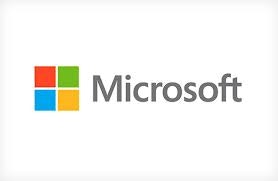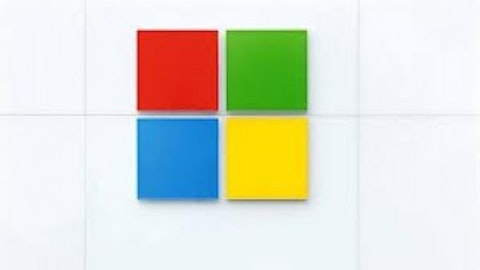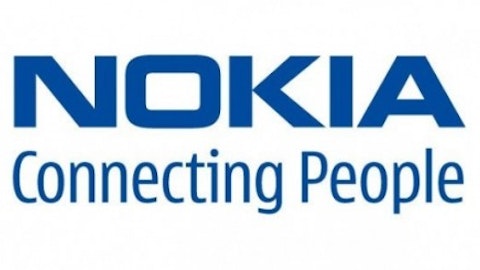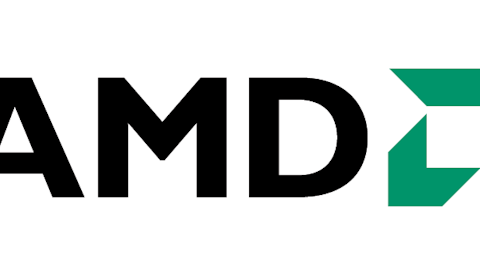
The financial results also reveal that the company is trying to balance out the decline in PC with increased focus on cloud offerings. However, investors should also keep an eye on increasing capital expenditure on the cloud and the inevitable impact it will have on margins.
Fundamentals
The market was expecting Microsoft Corporation (NASDAQ:MSFT) to post EPS of $0.67 on revenues of $19.9 billion. The software giant missed both targets, posting revenues of $19.1 billion and EPS of $0.52. The $900 million ($0.07 per share) inventory write-down of Surface RT also contributed towards the loss.
According to recently released Gartner data, the entire industry has declined by 10% year-over-year in the second quarter of 2013. The entire PC industry was relying on Microsoft Corporation (NASDAQ:MSFT)’s Windows 8 to turn things around, but the plan failed miserably. However, until now the constant stream of Windows licensing fees had shielded software giant’s top-line. The quarterly results show that PC industry misfortune is finally catching up with the company.
During the second quarter, the revenues from Windows OEMs (original equipment manufacturers) declined 15% year over year. The Street was expecting the Windows segment to post revenues of $4.8 billion, but it managed only $4.4 billion. The revenues from OEMs contribute approximately 65% to overall Windows segment revenues. Therefore, a decline in these revenues is a serious blow to the entire Windows segment. This 15% decline is somewhat in line with the 10% year-over-year decline in PC shipments. The consumer-Office segment also saw a significant decline of 27% year-over-year. The move towards cloud products is one of the reasons behind the decline of consumer-Office revenues.
Cloud Offerings
Microsoft Corporation (NASDAQ:MSFT) has been guilty of missing out on the handheld revolution. While the previous versions of ‘Windows Mobile OS’ were not a big success, the new WP8 has received positive consumer feedback. The company has partnered with Nokia Corporation (ADR) (NYSE:NOK) to launch the flashy OS. While Windows 8 has not been able to penetrate the tablet market, it is doing much better in smartphones.
The partnership with Nokia Corporation (ADR) (NYSE:NOK) is turning out to be more profitable for Microsoft Corporation (NASDAQ:MSFT). This is because Microsoft Corporation (NASDAQ:MSFT) is more interested in marketing its OS while Nokia needs revenues and cash flows. Nokia Corporation (ADR) (NYSE:NOK) has launched an extensive WP8 line which includes smartphones for various ranges including flagship models like Lumia 920 and Lumia 1020. Nokia Corporation (ADR) (NYSE:NOK)’s WP8 phones have particularly become pretty popular in Russia. According to statistics, WP8 has overtaken iOS as the second most popular smartphone OS in the country. The Finnish smartphone giant is not only doing well with NSN but is also bouncing back in the smartphone industry. The company has taken a huge risk by partnering with Microsoft instead of taking the safer option of Google’s Android. This risk can pay dividends in the long run by differentiating the company from generic Android OEMs like HTC, Sony etc.
This move towards low-memory handheld devices has also resulted in an increased demand for cloud services. This is the very reason Microsoft is focusing most of its energy on developing its cloud offerings. The company has spent approximately $1.8 billion on infrastructure, which is a mammoth increase over the last quarter. The sell side is speculating that most of this increase is driven by increased usage of online products such as Azure and Office 365, which is pushing Microsoft to increase cloud infrastructure capacity.
During the last few weeks, Microsoft has undergone a significant structural shift. The company is trying to adapt to the changing markets and focus on new areas of growth. While this renewed focus on the cloud is an eventuality in a declining PC industry, there is a renewed fear on the Street about the impact it can have on Microsoft margins. An increase of cloud revenues in the mix could significantly impact margins in the long run.
While the capital expenditure on cloud itself is an investing activity, it ends up in the income statement as depreciation. The nature of the cloud offerings is such that infrastructure expansion is constantly required to serve growing customers. Therefore, the continuous infrastructure requirements will result in higher depreciation and reduce margins in the long run.
Last Shot
The PC industry has not been idle while the handhelds take over the market. They have tried a number of methods to improve declining PC sales. These methods included lowering margins (by reducing product prices), Windows 8, Surface tablets, ridiculous market budgets, Ultrabooks etc., but none of these methods have worked. The entire industry is now hoping that Intel Corporation (NASDAQ:INTC) Haswell processors can save the sinking ship. The recent PC industry statistics from Gartner show that OEMs are building up Haswell inventory. This inventory buildup is one of the major reasons behind the high decline in second quarter PC sales.
Microsoft is focusing on improving its cloud offerings with significant increases in capital expenditures. This is the only way it can make up for the massive declines in the Windows and Microsoft Office revenues. The shift to Office 365 is severely affecting the revenues from the consumer segment of Microsoft Office. The cloud offerings inherently have lower margins, and revenue growth from these offerings will have a long lasting effect on margins.
The Windows segment is suffering from declining PC shipments. Windows 8 and Surface tablets have been unable to stem the flow. The PC industry is now expecting Intel Corporation (NASDAQ:INTC)’s Haswell to instigate a significant PC upgrade cycle. If the new Haswell processors are a success, Microsoft and Intel will reap the benefits. Therefore, Investors should ‘hold’ Microsoft until the cloud impact on margins and the Haswell impact on the PC industry play out.
The article Warning Signs for Long-Term Investors? originally appeared on Fool.com and is written by Mohsin Saeed.
Mohsin Saeed has no position in any stocks mentioned. The Motley Fool recommends Intel. The Motley Fool owns shares of Intel and Microsoft. Mohsin is a member of The Motley Fool Blog Network — entries represent the personal opinion of the blogger and are not formally edited.
Copyright © 1995 – 2013 The Motley Fool, LLC. All rights reserved. The Motley Fool has a disclosure policy.





